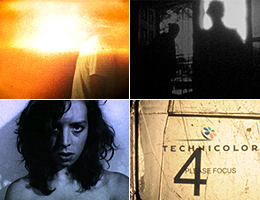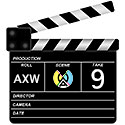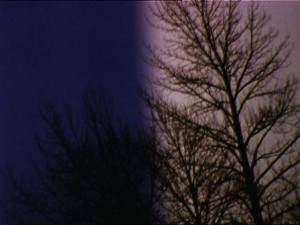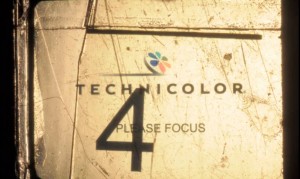BEYOND THE BODY’S FRAME (show 9) – TRT: 28.00
Balancing Heaven, Human, Earth
[toggle title=”Bell & HOWELL; Ana Rodríguez León; 8mm & Super 8; TRT: 8.56
A trip from the past to the future via the camera.
Read more…” status=”progression_closed”]
What was your creative process?
In 2010, I was part of the team of the Super 8 festival Toma Única, a kind of tourné-monté cinema festival. It was decided to make a collective movie, where every member of the team would shoot a work under the common theme: message in a bottle. That was the very beginning of Bell & Howell 2146 XL, which was later distributed independently from that project.
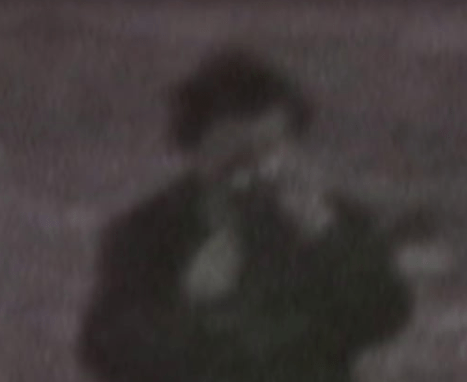
It took me a long time to get to a visual and narrative proposal for that idea, but everything became clear in the end, one afternoon at my grandmother’s house. That was the day when I found the Super 8 projector and other items for analogic edition that had belonged to my grandfather. I already had his Bell & Howell 2146 XL camera, but when I saw all the materials to shoot, edit and see Super 8 movies, I thought that was the message in a bottle for me, a message from a filmmaker to another, a hidden oportunity to build my identity as a filmmaker, in a poetic dialog with my own story and my own hypothetical future –or the future after my death-, all through the central figure of the camera.
This was my first work in first person in this way. Documentary and fiction mixed up together very naturally, but I found the real sense of the whole in the editing room, seeking for a hidden mystery in the images, that led to the final result.
The music I used, from spanish band Balago, brought a very hypnotic atmosphere to the work, that I believe took it further.
Is this inspired by a true story?
The pictures that appear in the work are my grandfather’s original pictures. As an amateur photographer, he portrayed his life and the life of his family and his town. So, in a sense, it is a true story, but it is also a fiction, based on the idea of what will happen to this camera after I have died. Who would have it? Would he or she, in the case of the film, use it? What would she see through the lens?
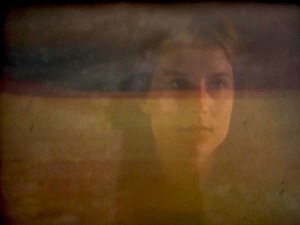 Even it’s every time more difficult to shoot in analogic formats, and it’s unlikely they will still be used in 2060, it was a great resource for the film to imagine the story this way. It was more about secret connections between people, through objects, than a realistic scenario of this future.
Even it’s every time more difficult to shoot in analogic formats, and it’s unlikely they will still be used in 2060, it was a great resource for the film to imagine the story this way. It was more about secret connections between people, through objects, than a realistic scenario of this future.
Was the house/space of any relevance?
The house where this couple appears in the future time it was the house where my parents were moving at that moment. As it was being remodeled, it had this aspect, which I thought was great, as it can give you the idea that these two people are building something, starting their own story. They look happy and in love and they portray this moment of their lives with the Bell & Howell 2146 XL.
In low budget (when there is any budget at all) projects, it’s some times difficult to find inner domestic spaces that give you a good result. When you use a house where you live or where someone close does, it’s complicated to make it fit with a story, as there are things everywhere full of information, connotations out of your control. The furniture, for instance, gives you the idea of what kind of people live in a house, what age they have, how much money they earn, and so. If you have the possibility to dispose all the elements in the way that suits your story that is fine, but here, where the action took place in the future, it would have been a huge process. This empty house lacked of most of those informations and had an austere beauty that I liked, and at the same time showed some elements, like doors, windows, the floor etc, very particular of some old Barcelona’s houses, linked to my own memories.
It was a great luck to have this space for this film.
[/toggle]
[toggle title=”REVERIES; Karissa Hahn; SUPER 8; TRT: 3.38
Aristotle’s belief: … the organs, not just the eye, retains the image … these sensations are retained and return to haunt the sleep … Bodies are vessels that take in images – Can we not see ghosts because our eye lags perception and we miss it? Are ghosts a perception of speed?
Read more…” status=”progression_closed”]
Reveries was very much influenced by Zelda Sayre, Charlotte Pryce, and Patrick Bokanowski’s, L’Ange.
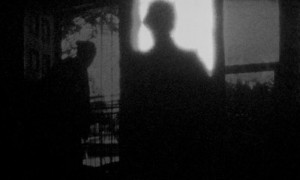 My work is quite often derived from a text, or it manifests as some reaction to an event – usually concerning desire. All of my work has been created in a hypomanic state of experimentation. I become obsessed with a concept or phrase and then draw out a long narrative that is meticulously researched and planned out. It’s funny though, because these longer films never fully come to fruition. Instead, I extract one scene or moment from each ‘storyboard’ which then acts as this emblematic entity to the unseen/made narrative. So now I have this archive of chaotic and drawn out chronicles that act only as source material for shorter works.
My work is quite often derived from a text, or it manifests as some reaction to an event – usually concerning desire. All of my work has been created in a hypomanic state of experimentation. I become obsessed with a concept or phrase and then draw out a long narrative that is meticulously researched and planned out. It’s funny though, because these longer films never fully come to fruition. Instead, I extract one scene or moment from each ‘storyboard’ which then acts as this emblematic entity to the unseen/made narrative. So now I have this archive of chaotic and drawn out chronicles that act only as source material for shorter works.
I am currently working only with camera-less filmmaking, where I print out digital videos from the internet onto film using my household printer. So there is video-work occurring, but it only performs as the source material – that essentially gets placed back onto film, as an act of putting images back on film that have been replaced with blu-ray, screened at theaters, and torrented back onto the internet. There is this immediacy with video that is nice, yet I currently strive to make it more tangible – and that is where celluloid plays a role.
[/toggle]
[toggle title=”INVERSION; (2102) Linda Fenstermaker; 16mm; TRT: 13.01
Blending perspectives layered around the camera, this film creates an open space to expand female consciousness, as an embodiment of the film itself.
Read more…” status=”progression_closed”]
What was your creative process with this film?
Inversion descends from my desire to push the bounds placed upon female representation. I wanted to explore the female form and material film in a symbiotic system, rather than the traditionally parasitic. I asked myself and my camera to imagine an empowered female, who had agency over her body and her representation within the film frame. My creative process with this film was very much dependent on the technical process, in visualizing the open space for the female form find herself. I developed a relationship with the camera through direct performance, as both cinematographer and performer, with the assistance of a cable release tool to control the camera from the position of the performer. In this dual role, I exposed myself onto the celluloid as the camera and subsequent viewers witnessed from new perspectives. Inversion was shot, edited and finished on 16mm film, which I felt was essential to the materiality of the film and the way in which the performer responds to the camera and the camera speaks to the celluloid film in the imagery captured.
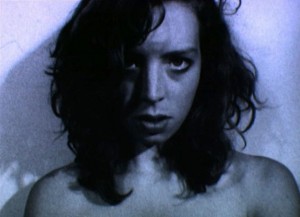 What do you think about the camera, the ‘gaze’?
What do you think about the camera, the ‘gaze’?
This question is so essential to my film and very similar to the questions I was asking myself throughout the process of making this film. How does the camera contribute to the ‘gaze’? What is the perspective of the female performer before the camera, director, audience? How can I create a new gaze or alternative perspective from the point of view of the performer? As I mentioned before, the film is about finding a space where the female body can exist outside of the gaze. In Inversion, the camera became a tool of the body represented, rather than a vessel for objectification. The audience is then placed within the gaze of the female body, rather than gazing upon the body, as she asserts herself within the film and the theater.
What about the soundtrack and the use of the voice/words you emit?
The words and vocal sounds give the female body her agency, as she explores the space of the camera, the landscape and herself. In this sense, she creates a life narrative about herself and for herself. She becomes an active part and creator of the film, as an inversion of the passive performer.
[/toggle]
[toggle title=”TRICKS ARE FOR KIDDO; Rhayne Vermette; 16mm; TRT: 2.22
In 2010, Winnipeg director, Guy Maddin exclaims: It’s impossible to collage a film!
Read more…” status=”progression_closed”]
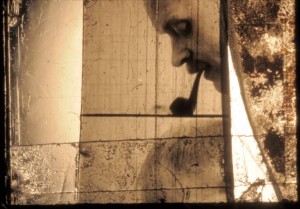 Tell us about the source material used in Tricks Are For Kiddo, and about your creative process with it.
Tell us about the source material used in Tricks Are For Kiddo, and about your creative process with it.
The source material came from the found footage readily available at the Winnipeg Film Group. This film is quite simply an inquiry into various methods to excavate something from the physical assemblage of images, much like the notion of a film collage, provoked by Mr. Maddin. My selection process was mainly engrossed with textures and either building up the density of an image, or deflating it. It was also interested in the various ways to reduce an image either through cuts or tears.
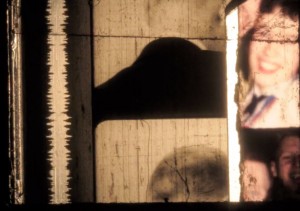 Do you think optical printing has a future?
Do you think optical printing has a future?
I use optical printing to get a digital transfer of my films. So far, my 16mm work cannot be run through a projector without enduring severe defacement and devastation.
[/toggle]

